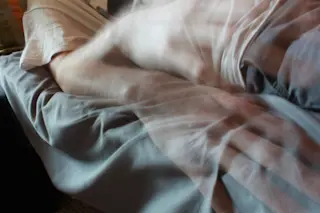Scientists have found that manipulating a person's sense of touch can confuse their sense of sight, an intriguing finding that suggests that touch and vision are
integrated in the human brain.... For decades, instructors in medical schools have taught students that the senses —including vision, touch and sound — are interpreted in different, discrete parts of the brain, says Michael Beauchamp of the University of Texas Medical School at Houston. “Now it turns out what we’re teaching them is wrong,” he says. “There’s a lot more cross talk between the modalities” [Science News].
In the experiment, which will be published in an upcoming Current Biology, researchers used a postage stamp-sized device that used tiny pins to stroke the test subject's finger in either an upward or downward direction.
When subjects watched a stationary stripe on a computer screen after a machine stroked their fingertips, the motion of the stroking created ...














